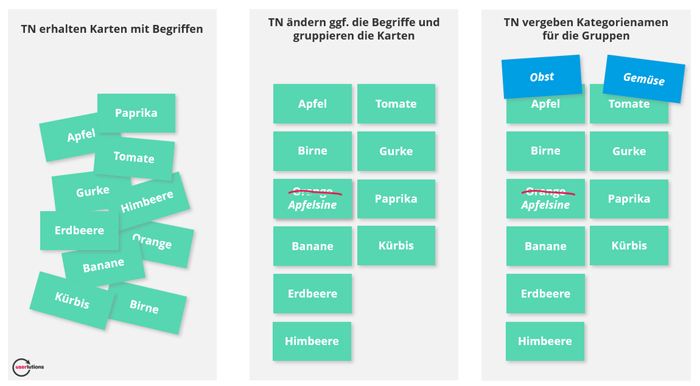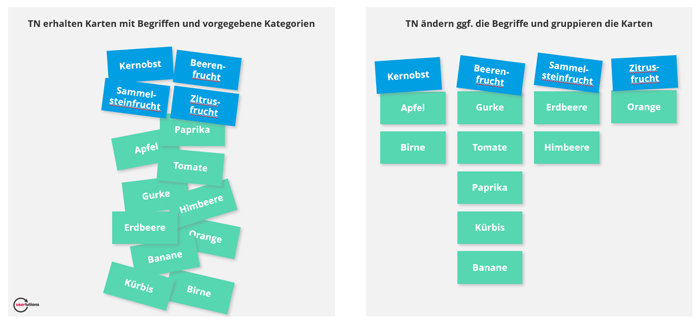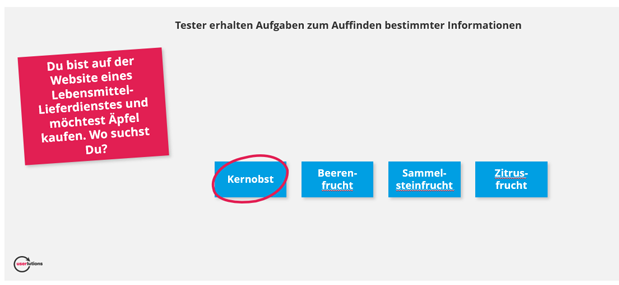A good information architecture helps your users to find content quickly and easily. It guides users efficiently to their goal – a sign of good usability and a hygiene factor for a high conversion rate.
You’ve probably felt lost before when using a website or app, and at the end of your search you’ve returned to the home page to start the journey all over again. What you have experienced is the normal result of faulty information architecture.
Instead of corresponding to the real mental model of the target group, navigations often “only” represent the internal view of the customer journey of customers. In the worst case scenario, this will make your navigation a reason to abandon or leave frustrated users visiting the site every day.
In this post, I show you how to get to a user-centric information structure using card sorting and how to test and improve your existing navigations.
Card-Sorting is a user-oriented, empirical usability method for generating quantitative (and qualitative) statements. It determines the optimal grouping of content from the user’s point of view and thus supports the user-centered development of information architectures.
When do you perform card sorting?
It depends! – early vs. late product development phases
Card sorting is mainly used in the analysis or conception phase to accompany the process. But also later, e.g. if problems with the existing information architecture are suspected, card sorting can be helpful. If one is still in the early stages of product development, one usually resorts to open card sorting because it takes a generative approach – it generates new grouping ideas.
Card sorting in early development stages allows changes to be made to the wireframe or prototype at low cost. In later product development phases or when a product is already released, closed card sorting and reverse card sorting (also: tree testing) are often used with an evaluative approach.
Open card sorting (generative approach)
In open card sorting, subjects sort pages, content, terms, information, or features into groups they find related. It thus offers a very good insight into the mental model of the target group. Open card sorting is ideally done while still in the design phase, but a content audit should have already taken place at this point.
The clusters formed are examined for commonalities in order to make a recommendation for an information architecture based on this. Since the number of groups perceived as belonging together by the test persons can vary greatly, a large sample is needed for valid results.
Closed card sorting (evaluative approach)
In closed card sorting, test subjects sort pages, content, terms, information, or functions into predetermined groups. Closed card sorting is often used when usability testing, analytics, or analysis of search queries have shown that there are problems with navigation, but the top level of navigation cannot be changed.
Reverse card sorting / treetesting (evaluative, iterative approach)
Reverse card sorting also already has an information architecture. However, the test subjects do not sort terms here, but are given the task of searching for specific information. The search takes place in the purely hierarchical information structure (usually still without the UI design). This offers the advantage that the cognitive process is more in line with the actual approach.
The success rate (information found), the direct path (without regressions) and the time are evaluated. The method provides insights into the navigation behavior of users. Reverse card sorting is often used to compare two different information architectures or to benchmark success after information architecture changes.
How do you perform card sorting?
Online vs. offline – and that’s not the only question!
Card sorting can be performed both offline and online. Since quantitative data wants to be collected for validation, the trend has been to perform card sorting online. Online card sorting is generally more cost-effective and quicker to carry out for large samples, as, among other things, the data is immediately available digitally for analysis and the costs for incentivisation are lower.
A big disadvantage, which should not be underestimated, is from my point of view the abandonment of the usability method “thinking out loud”. Most online card sorting tools do not provide an opportunity for test takers to comment on their thoughts and questions about each card. Also, the behavior cannot be observed, which often provides additional insight. In the worst case, a purely quantitative card sorting does not provide any new insights at all.
Qualitative vs. quantitative – The combination makes the difference!
I recommend combining a quantitative and qualitative approach. That is, using a large sample to conduct unmoderated online card sorting for valid quantitative results and using a much smaller sample to combine card sorting with the thinking-aloud method to generate qualitative insights. The latter could take place classically in a moderated (synchronous) card-sorting session on site.
We at Userlutions use our own tool RapidUsertests for this case and can thus quickly gain additional insights, moderated or unmoderated remotely.
How do you analyze a card sort?
Gut feeling vs. cluster analysis
With a small sample and a relatively low number of cards, you look at the individual card sorts and try to find commonalities in the sorts. If the sample is large and the number of cards is high, computer programs for hierarchical cluster analysis are used. Various analysis methods can be used for this purpose, for example a dendogram, a similarity matrix or a standardization grid.
In summary
- Card sorting helps to quickly and cost-effectively adapt the information architecture of an application to the requirements of the target groups.
- When selecting a card sorting method (open, closed or reverse), the product development stage and the scope for change are decisive.
- Card sortings can be moderated or unmoderated, online or offline. The type of implementation mainly influences the costs and time required.
- The analysis of quantitative results provides valid results. Qualitative findings through the use of the “Thinking Out Loud” method help to interpret the results.
Can we assist you?
your contact

Mathias Liesegang
UX Specialist & Account Manager
030 / 544 870 24
(Mon to Fri from 9 am to 6 pm)

Share
Share this article